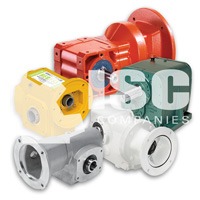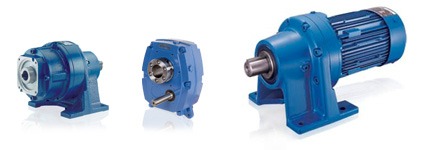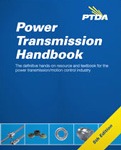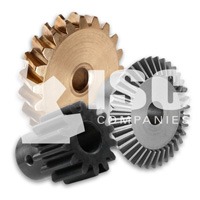 Enclosed Gears / Gearboxes
Enclosed Gears / Gearboxes
ISC Companies and affiliate Adams-ISC are distributors of mechanical power transmission parts including enclosed gears (gearboxes). For more information about the brands we offer and/or pricing, please contact us by phone 763-559-0033, by email [email protected], or by filling out our online contact form.
Enclosed gears, also known as gearboxes or speed reducers, are open gears contained in a housing. The housing supports bearings and shafts, holds in lubricants, and protects the components from surrounding conditions. Gearboxes are available in a wide range of load capacities and speed ratios.
The purpose of a gearbox is to increase or reduce speed. As a result, torque output will be the inverse of the function. If the enclosed drive is a speed reducer, the torque output will increase; if the drive increases speed, the torque output will decrease. Gear drive selection factors include: shaft orientation, speed ratio, design type, nature of load, rating, environment, mounting position, operating temperature range, and lubrication.
Basic Types of Gearboxes
Worm Gear
A single reduction speed reducer can achieve up to a 100:1 reduction ratio in a small package. Known as right angle drives, these consist of a cylindrical worm with screw threads and a worm. With a single start worm, the worm gear advances only one tooth for every 360-degree turn of the worm. So, regardless of the worm’s size, the gear ratio is the ‘size of the worm gear to 1′. Higher reduction ratios can be created by using double and triple reduction ratios.
Helical Gear
Provide high-efficiency speed reduction through 1, 2, 3, or 4 sets of gears. Power is transmitted from a high-speed pinion to a slower-speed gear. Helical gears usually operate with their shafts parallel to each other. The two most common types are the concentric (input and output shafts are in line) and parallel shaft (input and output shafts are offset). Single-stage helical gear reducers are typically used for gear ratios up to about 8:1. Where lower speeds and higher ratios are required, double, triple, and quadruple gear reduction stages can be used.
Cycloidal Disc
Different from conventional gearing because they operate without a high speed pinion or gear teeth, and the components operate in compression rather than shear. This is due to the design of the cycloidal discs that roll within a ring gear housing, similar to a planetary design. The main components are the eccentric cam, the internally flanged output shaft, the discs, and the ring gear housing.
Three Mounting Options

(L-R) Base-Mounted, Shaft-Mounted, Gearmotor
Base-mounted reducers, which have feet for bolting, are the most common.
Shaft-mounted reducers have a hollow output shaft that slips over the driven shaft.
A gearmotor combines an enclosed gearset with a motor. A motorized reducer resembles a gearmotor except that it is driven by a separate NEMA C-face motor.
Seals and Breathers
Seals are used between the gear housing and input and output shafts to retain oil and block dirt. The most commonly used type, the radial lip seal, consists of a metal casing that fits into the housing bore and an elastomeric sealing lip that presses on the shaft. Labyrinth seals are use for high-speed applications, and consist of a housing with a series of rings that limit leakage. A breather is a plug with a hole that is mounted in the gear housing to permit airflow and relieve internal pressure.
Lubrication
Enclosed gears are generally lubricated with oil. The most common types of oil are rust and oxidation inhibiting, extreme pressure, compounded, and synthetic. Other types include grease and solid film. Grease can be used for worm, planetary, cycloidal, and hypoidal reducers. Common distribution methods are a splash system and a circulating system
Top Brands We Offer
 Content on this page was created using excerpts from the Power Transmission Handbook (5th Edition), which is written and sold by the Power Transmission Distributor’s Association (PTDA).
Content on this page was created using excerpts from the Power Transmission Handbook (5th Edition), which is written and sold by the Power Transmission Distributor’s Association (PTDA).













You must be logged in to post a comment.